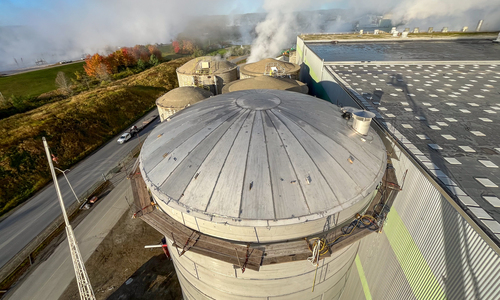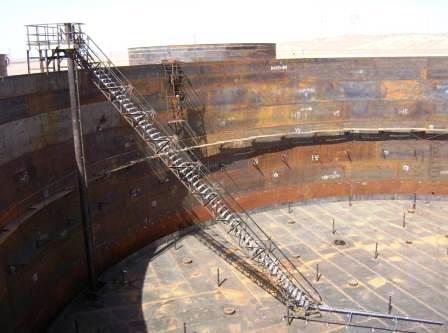How to Perform API 650 Welding Inspection Effectively for Better Quality Results
A Step-by-Step Take A Look At the Installation Refine of Welding Evaluation Techniques
Welding assessment is a vital process that ensures architectural stability and safety and security. The setup of examination methods involves several systematic steps, each indispensable to achieving trusted results. From planning and tool option to conducting non-destructive and aesthetic examinations, each phase demands cautious interest. Understanding these procedures can substantially enhance quality control in welding tasks. What challenges develop in implementing these methods, and how can they be successfully addressed?
Comprehending the Value of Welding Examination
Welding examination is a vital part of making certain structural integrity and safety and security in construction and production procedures. This method includes evaluating bonded joints for issues, making certain that they fulfill specific requirements and laws. By methodically gauging weld quality, inspectors can recognize issues such as cracks, voids, and insufficient blend, which can endanger the toughness and resilience of structures.
The importance of welding inspection prolongs beyond immediate safety problems; it aids prevent pricey failings and prospective dangers in the lengthy term. Efficient assessment strategies foster compliance with industry standards, therefore improving the overall reliability of bonded elements. In addition, a durable assessment process contributes to keeping the online reputation of manufacturers and contractors, as it ensures clients of the quality of their jobs. Inevitably, understanding the relevance of welding assessment is vital for promoting secure building and construction methods and making sure the durability of important framework and products.
Picking the Right Equipment for Evaluation
When selecting the suitable tools for examination, it is necessary to ponder the specific demands of the welding process and the products involved. Various assessment approaches, such as aesthetic, ultrasonic, and radiographic testing, require unique devices customized to their special demands. For visual assessments, devices like multiplying calipers and glasses are vital for reviewing weld quality. Ultrasonic testing requires specific equipment capable of transferring and getting acoustic waves to detect inner flaws. Radiographic testing, on the other hand, utilizes X-ray or gamma-ray sources along with delicate movie or electronic detectors to disclose inconsistencies.
Furthermore, individual safety tools (PPE) is crucial to guarantee the safety of assessors throughout analyses. Picking the right devices not just boosts the accuracy of inspections yet additionally adds to the overall integrity and safety of the welding task. Subsequently, a comprehensive understanding of readily available devices and their applications is important for effective welding inspection.
Preparing for the Assessment Process
Before launching the assessment process, it is important to develop an extensive plan that outlines the extent and goals of the assessment. This strategy must include particular standards that specify what constitutes appropriate quality in the welding work being evaluated. Determining the relevant codes and requirements is vital, as they will assist the evaluation standards and methods.
Additionally, employees included in the inspection needs to be properly educated and accredited in welding assessment techniques to ensure integrity and precision. A checklist can be valuable in organizing the numerous aspects of the examination, ranging from tools readiness to environmental problems that can impact the analysis.

Lastly, logistical factors to consider such as scheduling, available resources, and communication between staff member should be dealt with. By preparing methodically, assessors can boost the performance of the analysis and make certain that all crucial elements are appropriately thought about before proceeding with the evaluation itself.
Carrying Out Visual Evaluations

Performing aesthetic evaluations is an essential action in the welding evaluation process, calling for cautious prep work to ensure effective examination. Examiners must know with key issue indicators that can signify prospective issues in weld top quality. By concentrating on these elements, one can enhance the general integrity of the assessment outcomes.
Planning For Visual Examination
Visual examination functions as an essential very first step in the welding inspection process, ensuring that any kind of potential issues are determined early (API 650 Welding Inspection). Correct preparation is crucial for effective aesthetic examination. Assessors should begin by examining pertinent documentation, including welding treatments and requirements, to understand the project requirements. They need to collect essential tools, such as magnifying glasses, flashlights, and proper personal protective navigate to this site devices (PPE) A thorough evaluation of the evaluation area is important; assessors need to validate it is totally free and tidy of blockages. In addition, it is necessary to establish perfect lights problems to boost visibility of welds. By taking these preparatory steps, examiners can produce a setting for recognizing disparities and ensuring the honesty of the bonded structures
Key Defect Indicators
A detailed understanding of key defect indications is essential throughout aesthetic inspections to guarantee the quality and safety and security of bonded joints. Examiners ought to concentrate on certain signs such as cracks, porosity, undercuts, and insufficient combination. Cracks may look like sharp lines and can endanger structural honesty. Porosity materializes as small openings that can weaken weld toughness. Undercuts, which are grooves along the weld side, can bring about anxiety focus. Insufficient fusion indicates that the weld steel did not correctly bond with the base material, leading to a weak joint. By systematically identifying these defects, assessors can ascertain compliance with industry requirements and improve the general dependability of bonded structures, ultimately contributing to safer functional conditions.
Applying Non-Destructive Checking Techniques

Numerous non-destructive screening (NDT) techniques are important to guaranteeing the honesty of bonded frameworks without jeopardizing their capability. These methods enable assessors to evaluate weld high quality and spot flaws without causing damage to the materials being examined. Common NDT methods consist of ultrasonic testing, radiographic screening, magnetic fragment screening, and color penetrant testing. Each technique offers a particular function, resolving different sorts of flaws such as fractures, porosity, or insufficient blend.
Implementing NDT strategies requires a methodical technique, starting with picking the suitable technique based upon the products and the nature of the weld. Educating personnel in these techniques is necessary for exact results. Additionally, establishing clear procedures and requirements assurances uniformity throughout the examination procedure. By incorporating NDT right into the welding inspection workflow, organizations can boost the integrity of their items while minimizing potential dangers linked with architectural failings. This aggressive strategy inevitably adds to maintaining safety and quality standards in welded building and constructions.
Recording and Analyzing Examination Outcomes
Reliable paperwork and evaluation of evaluation results are important components of the welding examination procedure. Exact records of evaluation findings function as a referral for quality control and compliance with market criteria. API 650 Welding Inspection. Assessors need to make use of organized forms or electronic systems to log details such as the kind of weld, assessment methods utilized, and any discrepancies determined during the evaluation
Once information is gathered, comprehensive evaluation is crucial. This involves contrasting results versus established standards to determine patterns or repeating concerns. Statistical devices may be utilized to measure defects and examine their effect on total weld quality.
Effective communication of searchings for to pertinent stakeholders is crucial. Summaries and reports must be concise and clear, highlighting vital understandings and referrals for restorative activities. By systematically documenting and analyzing inspection results, companies can foster continuous enhancement in welding techniques and boost product stability.
Often Asked Concerns
What Credentials Are Required to Become a Welding Inspector?
To end up being a welding examiner, one usually requires pertinent certifications such as AWS CWI, along with experience in welding methods, understanding of welding codes, and proficiency in evaluation methods to assure top quality and safety and security criteria.
Exactly How Usually Should Welding Inspections Be Performed?
Welding inspections should be carried out routinely, generally after each weld is completed, and occasionally throughout projects. Factors such as task complexity, industry criteria, and governing requirements can influence the regularity of these examinations.
What Is the Cost of Welding Evaluation Providers?
The price of welding inspection services varies substantially based on aspects such as project dimension, place, and intricacy. Generally, costs range from $100 to $150 per hour, with added charges for specialized testing and certifications.
Exist Certifications for Welding Inspectors?
Yes, there are various qualifications for welding examiners, including those supplied by the American Welding Culture (AWS) and the International Institute of Welding (IIW) These qualifications ensure inspectors have the essential skills and understanding for reliable evaluations.

How Do I Choose an Assessment Provider?
To choose an assessment company, one should evaluate credentials, experience, industry reputation, and consumer testimonials. In addition, contrasting solution offerings and prices can assist guarantee the picked supplier satisfies details try here task requires properly.
Furthermore, personnel entailed in the evaluation needs to be adequately educated and accredited in welding inspection strategies to guarantee integrity and click for info accuracy. Performing visual assessments is a necessary step in the welding assessment procedure, needing cautious prep work to guarantee efficient assessment. Visual assessment serves as a vital initial step in the welding evaluation process, guaranteeing that any potential problems are determined early. Reliable paperwork and evaluation of examination outcomes are vital parts of the welding inspection process. Welding inspections must be performed regularly, normally after each weld is finished, and periodically during tasks.